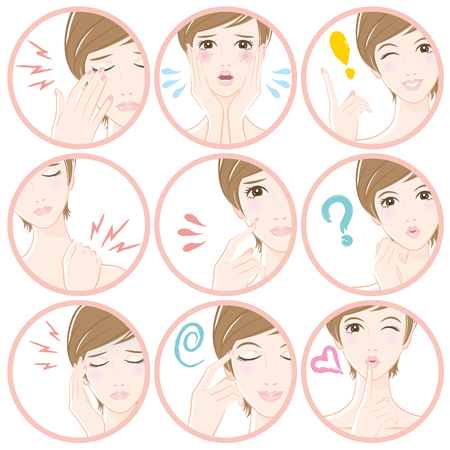1. Understanding Microcurrent Devices: A Brief Overview
Microcurrent devices have become a staple in the UK’s beauty scene, offering a non-invasive solution for those seeking firmer, more radiant skin without the need for professional treatments. These handheld tools use low-level electrical currents to stimulate facial muscles, boost collagen production, and enhance skin tone—making them particularly popular among skincare enthusiasts from London to Edinburgh. The rise in demand across the UK reflects not only a growing awareness of advanced home skincare technology but also a desire for salon-quality results from the comfort of your own home. However, achieving consistent benefits from your microcurrent device relies heavily on how well you care for it. Regular maintenance ensures optimal performance, longevity, and hygiene, helping you get the most out of your investment and ensuring every treatment delivers visible results. Proper upkeep is not just about preserving the device itself; it’s also crucial for maintaining healthy skin and maximising the transformative effects that have made microcurrent facials such a buzzword in British beauty circles.
Daily Cleaning Routine: Keeping Your Device Fresh
Proper daily cleaning is essential for extending the life of your microcurrent device, especially given the unique concerns associated with UK tap water and common skincare product residues. Here’s a step-by-step routine tailored for UK users to ensure optimal hygiene and performance:
Step-by-Step Cleaning Advice
- Power Off and Unplug: Always switch off and unplug your device before cleaning to avoid any electrical mishaps.
- Wipe Electrodes: Use a soft, lint-free cloth slightly dampened with distilled or filtered water. Avoid using tap water directly, as it can contain minerals that cause residue build-up on electrodes.
- Focus on Crevices: For hard-to-reach areas, use a cotton bud dipped in distilled water. This ensures thorough removal of gel or serum remnants without scratching the device.
- Dry Thoroughly: Gently pat the device dry with a clean, dry cloth. Make sure all moisture is removed before storing.
Recommended Cleaning Products
| Product Type | UK-Friendly Example | Why It’s Suitable |
|---|---|---|
| Distilled Water | Tesco Distilled Water | No minerals; prevents limescale and residue build-up on electrodes |
| Lint-Free Cloths | Sainsbury’s Microfibre Cloths | Soft, non-abrasive material protects delicate surfaces |
| Mild Soap (if needed) | Simple Pure Soap Bar | Fragrance- and dye-free; gentle for sensitive skin and devices |
| Cotton Buds | B&M Cotton Buds | Ideal for detailed cleaning around electrode edges and buttons |
Common UK Tap Water Concerns & Solutions
The mineral content in UK tap water varies by region, with many areas experiencing “hard” water due to high levels of calcium and magnesium. These minerals can leave deposits on your microcurrent device, affecting its efficiency over time.
How to Tackle Hard Water Issues:
- Avoid direct tap water contact: Always opt for distilled or filtered water when cleaning your device.
- If only tap water is available: After cleaning, wipe down electrodes with a cloth dampened in distilled water to remove any residual minerals.
- Regular deep cleans: Once a week, perform a more thorough clean using a gentle soap solution followed by rinsing with distilled water to prevent build-up.
Key Takeaway:
A simple yet consistent cleaning routine—using the right products and water type—will keep your microcurrent device performing at its best while protecting your skin from unwanted residue or irritation. Adapting your care to local UK conditions ensures longevity and safe use every day.

3. Safe Storage: British Climate Considerations
Proper storage of your microcurrent device is essential for prolonging its performance, especially when factoring in the unique challenges posed by the UK’s famously damp climate. The high levels of humidity and frequent rainfall can contribute to condensation, which poses a risk to delicate electronic circuits and battery integrity. To safeguard your device, always store it in a cool, dry place away from direct sunlight and sources of moisture.
Choosing the Right Environment
It’s best to avoid keeping your device in bathrooms or unheated conservatories, as these areas are prone to temperature fluctuations and increased dampness. Instead, opt for a bedroom drawer or a dedicated vanity case with a silica gel packet included for extra moisture absorption. For those in particularly humid regions such as the West Country or coastal areas, consider investing in a small dehumidifier for your storage space.
Protecting Delicate Electronics
Ensure that your device is always stored with its protective cap on (if supplied) and avoid coiling cables too tightly, which can cause internal wire damage over time. If your microcurrent device comes with a carrying pouch, use it consistently to prevent dust ingress and accidental knocks. For added protection during longer periods of non-use, remove any batteries if possible to prevent corrosion and leakage.
Quick Tips for UK Users
– Store away from windowsills to minimise condensation risk
– Avoid leaving your device in cold cars or near radiators
– Use breathable storage bags rather than airtight containers, which can trap residual moisture
– Regularly check your storage area for signs of mould or damp patches and address promptly
4. Charging and Battery Tips: Prolonging Lifespan
Proper charging habits are essential for maintaining the performance and longevity of your microcurrent device, especially for users in the UK where voltage standards and plug types differ from other regions. To help you get the most out of your device, follow these practical tips tailored to British users:
Adapting to UK Sockets
Always use the original charger provided by your device’s manufacturer or one that meets the correct output specifications. In the UK, mains electricity runs at 230V with a frequency of 50Hz, and plugs are Type G. If your device was purchased overseas, double-check that your adaptor is compatible and, if necessary, invest in a certified plug adaptor or voltage converter to avoid damaging the battery.
Charging Habits for Optimal Battery Health
Avoid overcharging your device by unplugging it once fully charged—most modern devices have indicators for this purpose. Repeatedly letting the battery run completely flat (deep discharges) can shorten its lifespan, so try to recharge when the battery drops to around 20-30%. Conversely, frequent short charges without allowing any discharge may also reduce efficiency over time.
Recommended Charging Practices
| Practice | Benefit |
|---|---|
| Use official chargers/adaptors | Ensures correct voltage and current delivery |
| Avoid overnight charging | Prevents overheating and battery degradation |
| Charge between 20%-80% | Maximises battery cycle life |
| Store at moderate charge if unused | Keeps battery chemistry stable during long periods of inactivity |
Consistent Device Performance
To ensure consistent performance, clean charging ports regularly using a dry cloth to prevent dust build-up, which can hinder connectivity and efficient charging. If you notice rapid battery drain or unusually slow charging, consult the manufacturer or a qualified technician—do not attempt repairs yourself as this could void warranties or worsen the issue.
By paying close attention to how you charge and power your microcurrent device, you’ll protect both its internal components and overall effectiveness, ensuring years of reliable use in your daily skincare routine.
5. Spotting and Addressing Wear and Tear
Maintaining your microcurrent device in top condition means staying vigilant for early signs of wear and tear. The first indicators often include diminished battery life, inconsistent power output, or visible degradation on electrode surfaces—such as discolouration, pitting, or residue build-up that doesn’t clear with regular cleaning. If you notice the device feels unusually warm during use or produces a buzzing sound, these are also red flags that should not be ignored.
How to Identify Early Warning Signs
Check your device weekly for any cracks in the casing, loose buttons, or malfunctioning displays. For models with replaceable heads or attachments, ensure they fit snugly without wobbling. A sudden drop in performance—like weaker microcurrent sensation or patchy stimulation—is another sign your device might need attention.
UK-Specific Warranty Guidance
Many reputable brands operating in the UK provide a standard one- or two-year manufacturer’s warranty. Always register your device upon purchase to activate this cover. Keep your proof of purchase somewhere safe, as this will be required if you need to make a claim. Under UK consumer law, you’re entitled to a repair, replacement, or refund if your device is faulty within six months of purchase—even if the issue is gradual rather than immediate.
Repair Options for UK Users
If your microcurrent device is out of warranty but still functional, check whether the manufacturer offers paid repair services or replacement parts. Some high street retailers in the UK may also offer diagnostics or minor fixes for beauty devices. Avoid attempting DIY repairs, as this can void any remaining warranty and potentially damage the unit further. Instead, reach out directly to customer support for guidance on authorised service centres or official repair procedures. Taking prompt action when you spot early signs of wear will help ensure your microcurrent device stays effective and safe to use for years to come.
6. Best Practices for Safe and Effective Use
To truly maximise the lifespan and performance of your microcurrent device, it’s essential to develop habits that support both hygiene and skin safety, while fitting seamlessly into a typical UK routine. Begin by always washing your hands and thoroughly cleansing your face before each session; this helps prevent the transfer of bacteria that could compromise both your skin and your device. For those living in areas with hard water—a common concern across much of the UK—consider using distilled or filtered water during cleaning routines to avoid mineral build-up on device surfaces.
Store your device in a cool, dry place away from direct sunlight and damp, especially if you live in typically humid British climates or keep your skincare products in the bathroom. After every use, gently wipe down the electrodes with an alcohol-free, antibacterial wipe to maintain hygiene without damaging sensitive metal components. Replace gels and conductive serums according to manufacturer guidance—using expired products can irritate the skin and reduce the effectiveness of treatments.
For best results, integrate the device into a consistent self-care schedule—many UK users find it easiest to set reminders for evening routines or Sunday pampering sessions. Finally, always follow recommended usage times and avoid overuse; more is not always better when it comes to microcurrent therapy. By incorporating these straightforward yet effective habits into your daily life, you’ll protect both your skin’s health and the longevity of your favourite device, ensuring safe and optimal results with every use.


